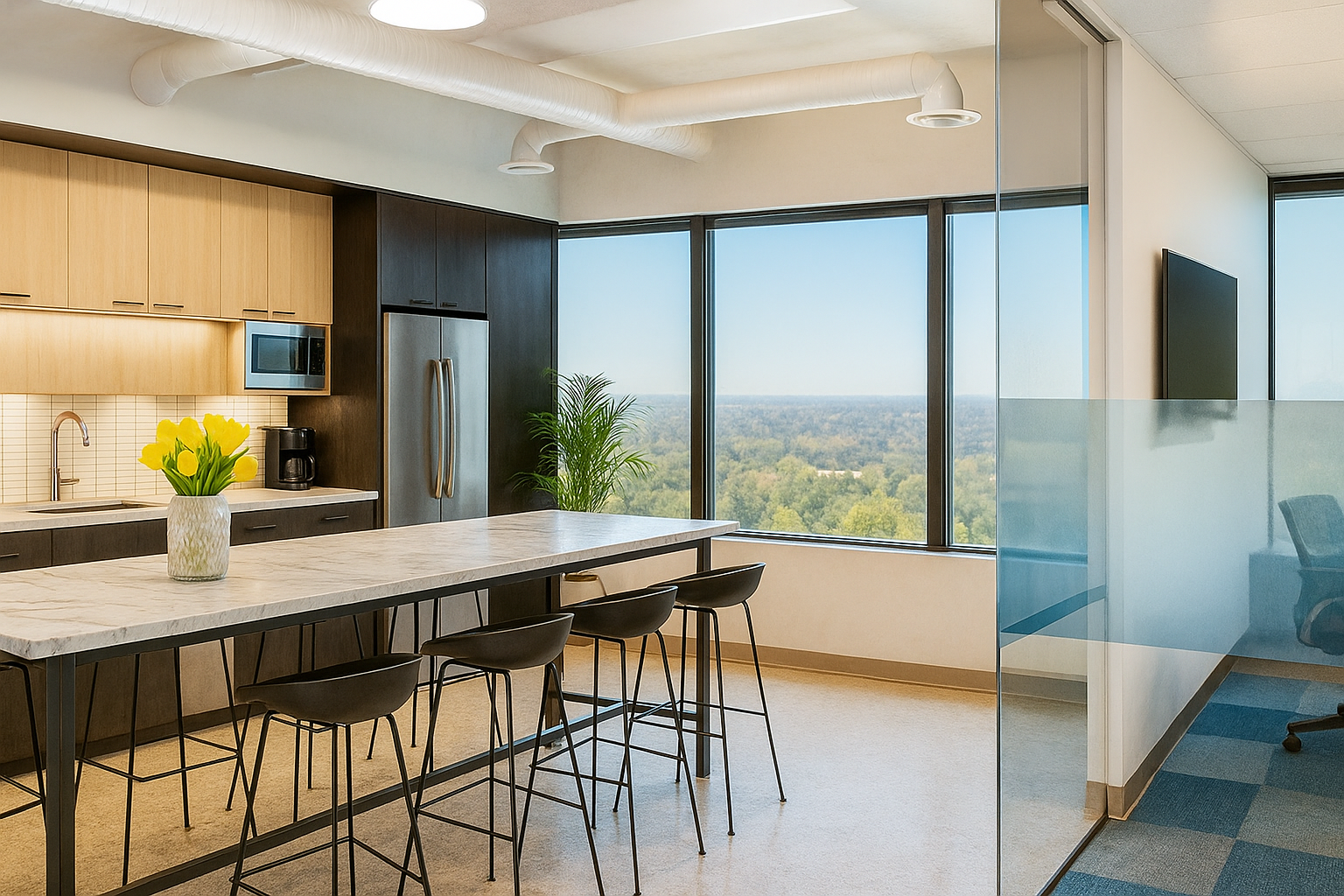The corner office with floor to ceiling windows used to be a symbol of executive privilege. Today, smart businesses understand that access to natural light and outdoor views benefits every employee, not just senior management. Research from Harvard Business Review reveals that natural light ranks as the number one workplace perk employees want, surpassing flexible schedules, free food, and even higher salaries. Yet most office interior design wastes this valuable resource through poor planning that blocks windows, creates dark interior zones, and limits access to the psychological benefits of outdoor connections.
Every window in your office represents untapped potential for improving employee productivity, reducing energy costs, and creating more attractive work environments. Professional office interior design teams understand that maximizing views and window space requires strategic planning that goes far beyond simply avoiding furniture placement near windows. The science is clear: employees with access to natural light sleep 46 minutes longer each night, experience 63% fewer headaches, and demonstrate 15% higher creativity levels compared to those in windowless environments.
How Air Flow Quality and Lighting in Office Layout Affect Productivity
Air flow quality and natural lighting work together to create optimal work environments that support both physical health and cognitive performance. When office interior design maximizes window access, the benefits extend beyond visual comfort to include natural ventilation opportunities that improve indoor air quality. Research demonstrates that offices with good natural light and fresh air circulation experience 40% fewer employee sick days and 25% higher productivity rates.
Modern office design must balance these competing demands through strategic window placement and mechanical ventilation systems. Professional office interior design teams understand how to create environments that maximize natural light benefits while maintaining air flow quality standards. When commercial interior design incorporates both natural lighting and ventilation planning, the results include improved employee alertness, reduced fatigue, and enhanced overall workplace satisfaction.
Office furniture design plays a critical role in supporting both lighting and air circulation objectives. Workstations positioned perpendicular to windows receive optimal natural light without screen glare while allowing air movement around work areas. Office interior layouts that consider both factors create environments where employees feel energized rather than sluggish throughout the workday.
The psychological benefits of window access contribute significantly to workplace satisfaction and retention. Employees with views of nature report lower stress levels and greater job satisfaction compared to those working in windowless environments. Professional office interior design teams understand these human factors and create layouts that provide equitable access to natural elements for all team members.
Advantages of Maximizing Views and Window Space in Office Layout
Maximizing window space in office interior design creates measurable improvements in employee performance and business outcomes. Studies show that workers with access to natural light demonstrate 15% higher productivity levels and 25% better performance on cognitive tasks compared to those in artificially lit environments. These improvements translate directly into enhanced business results through faster project completion and improved quality of work output.
Energy cost savings represent another significant advantage of strategic window planning in modern office design. Natural lighting can reduce artificial lighting requirements by up to 40% during daylight hours, lowering electricity consumption and HVAC cooling loads. Professional commercial interior design teams understand how to position workstations and common areas to maximize these energy efficiency benefits while maintaining visual comfort for employees.
Health benefits multiply when office interior design prioritizes natural light access. Employees working near windows experience 84% fewer symptoms of eye strain, headaches, and blurred vision compared to those in interior locations. These improvements reduce healthcare costs and absenteeism while creating more comfortable work environments that support long term employee wellbeing.
Recruitment advantages emerge when office interior layouts showcase attractive views and abundant natural light. Top talent increasingly considers workplace quality when evaluating job opportunities, and offices with excellent natural light access become competitive advantages in hiring processes. Professional office interior design that maximizes window space creates environments that attract rather than repel high performing candidates.
Real estate value increases when commercial interior design optimizes natural light and views effectively. Spaces with excellent window access command higher rental rates and resale values compared to similar properties with poor natural lighting. Professional office furniture design that supports rather than blocks window access protects and enhances property investment values over time.
Practical Tips for Maximizing Views and Window Space
- Position primary workstations within fifteen feet of windows whenever possible in office interior design projects. Research indicates that natural light benefits diminish significantly beyond this distance, making proximity a critical factor in space planning. Professional office interior design teams create layouts that provide direct or indirect window access for maximum numbers of employees rather than concentrating benefits in a few premium locations.
- Use glass partitions instead of solid walls to allow natural light penetration throughout office interior layouts. Transparent barriers maintain privacy and noise control while enabling light transmission to interior spaces. Modern office design incorporates floor to ceiling glass systems that maximize light distribution without compromising functional space division requirements.
- Select office furniture design elements that reflect rather than absorb natural light. Light colored surfaces, glass table tops, and polished finishes help distribute daylight throughout work areas. Commercial interior design strategies that include reflective materials can increase effective lighting levels by up to 30% without additional window area.
- Avoid placing tall storage units or equipment near windows in office interior layouts. These obstructions block natural light from reaching interior spaces and create unnecessary shadows. Professional office interior design teams position storage along interior walls and use low profile furniture near window areas to maintain unobstructed light paths.
- Implement automated window treatments that optimize natural light while controlling glare and heat gain. Smart blinds and electrochromic glass allow precise control of light levels throughout the day. Modern office design incorporates these technologies to maintain visual comfort while maximizing natural lighting benefits for office interior design applications.
- Create sight lines through office interior layouts that connect multiple spaces to window views. Open planning concepts and strategic corridor placement allow employees in interior locations to maintain visual connections with outdoor environments. Professional commercial interior design uses these sight line strategies to extend window benefits beyond immediate perimeter areas.
- Orient office furniture design to take advantage of optimal natural light angles throughout the day. Workstations positioned perpendicular to windows receive consistent lighting without direct glare problems. Office interior design teams analyze sun paths and seasonal variations to create furniture arrangements that maintain lighting quality year round.
- Integrate biophilic design elements that enhance the connection between interior spaces and outdoor views. Plants, natural materials, and water features complement window views while improving air flow quality through natural processes. Professional office interior design combines these elements strategically to reinforce the psychological benefits of nature access.
- Design flexible office interior layouts that can adapt to changing lighting conditions and seasonal variations. Modular office furniture design systems allow reconfiguration based on optimal lighting patterns throughout the year. Commercial interior design approaches that incorporate flexibility maintain lighting quality as business needs evolve.
- Coordinate artificial lighting systems with natural light availability to create seamless illumination throughout office interior layouts. Daylight sensors and automated dimming controls ensure consistent lighting levels while maximizing energy efficiency. Professional office interior design integrates these systems to maintain optimal visual conditions regardless of external weather conditions.
Frequently Asked Questions (FAQ):
How can businesses determine the optimal office furniture design placement to maximize natural light benefits?
Professional office interior design teams analyze sun angles, seasonal variations, and building orientation to determine optimal furniture placement strategies. The key principle involves positioning primary workstations within fifteen feet of windows while avoiding direct screen glare. Office interior layouts should place desks perpendicular to windows rather than facing them directly to minimize glare while maximizing natural light exposure. Modern office design uses computer modeling to predict lighting patterns throughout the year, ensuring that office furniture design decisions support rather than compromise natural lighting objectives. Commercial interior design professionals also consider existing architectural features and plan furniture arrangements that maintain sight lines to outdoor views for employees in interior locations.
What role does air flow quality play in window space planning for office interior design projects?
Air flow quality becomes critical when maximizing window space because natural ventilation opportunities directly affect indoor air quality and employee health. Professional office interior design teams coordinate window placement with ventilation systems to support both natural lighting and fresh air circulation. The German “Lüften” practice demonstrates how strategic window operation can maintain excellent air flow quality while maximizing natural light benefits. Modern office design must balance sealed environments required for climate control with periodic natural ventilation that improves cognitive performance. Commercial interior design professionals understand how office furniture design affects air movement patterns and position workstations to support rather than obstruct natural air circulation around window areas.
How do professional teams measure the return on investment for window space optimization in commercial interior design projects?
Professional office interior design teams measure ROI through multiple metrics including energy cost reductions, productivity improvements, and employee retention rates. Natural lighting optimization typically reduces artificial lighting costs by 40% while improving employee productivity by 15%, creating quantifiable financial benefits. Commercial interior design investments in window space maximization also deliver value through reduced healthcare costs, lower absenteeism rates, and enhanced recruitment capabilities. Modern office design projects track employee satisfaction surveys, sick day statistics, and energy consumption data to demonstrate the business value of optimized natural lighting. Professional teams provide comprehensive reporting that shows how office interior layouts supporting window access create measurable improvements in operational efficiency and employee wellbeing that justify the initial design investment.
Key Takeaways:
- Professional office interior design that maximizes window access improves employee productivity by 15% and reduces sick days by 40% through natural light benefits
- Strategic office furniture design positioning can increase effective natural lighting by 30% through reflective surfaces and optimal workstation placement
- Modern office design requires glass partitions and transparent barriers to distribute natural light throughout office interior layouts without compromising privacy
- Energy savings from maximized natural lighting can reduce artificial lighting costs by 40% while improving employee satisfaction and retention rates
- Office interior design teams must position tall furniture away from windows to prevent light blocking and maintain sight lines to outdoor views
- Automated window treatments integrated with smart building systems optimize natural light while controlling glare and thermal comfort
- Biophilic design elements enhance the psychological benefits of window access while supporting air flow quality through natural processes
- Flexible office interior layouts allow adaptation to seasonal lighting changes and evolving business requirements
- Professional commercial interior design coordination between natural and artificial lighting systems ensures consistent illumination quality throughout the workday
The most successful office interior design projects recognize that windows represent valuable assets requiring strategic planning to maximize their benefits. Professional office interior design teams bring expertise that transforms basic window access into comprehensive natural lighting strategies supporting employee health, productivity, and satisfaction. When commercial interior design prioritizes view and window space optimization, businesses create competitive advantages through improved workplace quality, reduced operating costs, and enhanced employee retention. Smart investment in professional office furniture design and modern office design approaches that maximize natural elements delivers measurable returns while creating more attractive, productive work environments for teams to thrive.

